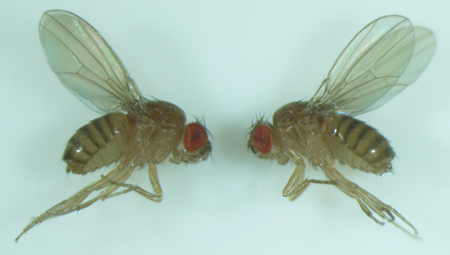March 15, 2012

Dr. Fuse
The finding of the research team led by Dr. Naoyuki Fuse of Biodiversity Global COE Program at Kyoto University's Graduate School of Science was published on PLoS ONE.
Summary
Experimental evolution studies have provided insights into molecular mechanisms underlying environmental adaptation but have been limited mostly to bacteria carrying a small genome. Recently, next-generation sequencing technology has enabled us to determine the whole genome sequences of sexual organisms and is starting to be applied to experimental evolution studies. We study an unusual Drosophila melanogaster line, termed "Dark-fly", which has been maintained in constant dark conditions for 57 years (1400 generations). We found high fecundity of Dark-fly in darkness and determined the whole genome sequence of Dark-fly using a next-generation sequencer. We identified many genomic alterations and obtained a list of the potential candidate genes involved in the traits of Dark-fly. These included genes related to detoxification and light perception. Although functional analysis of each mutation remains a future issue, this manuscript represents a framework for linking genomic alterations to environmental adaptation.

- Figure legend: Dark-fly (right) looks like normal fly (left) but carries many mutations on its genome.
Link to the journal paper:
http://dx.doi.org/10.1371/journal.pone.0033288
http://hdl.handle.net/2433/154036 (Research Information Repository KURENAI)
Izutsu M, Zhou J, Sugiyama Y, Nishimura O, Aizu T, et al. (2012) Genome Features of “Dark-Fly”, a Drosophila Line Reared Long-Term in a Dark Environment. PLoS ONE 7(3): e33288. doi:10.1371/journal.pone.0033288

